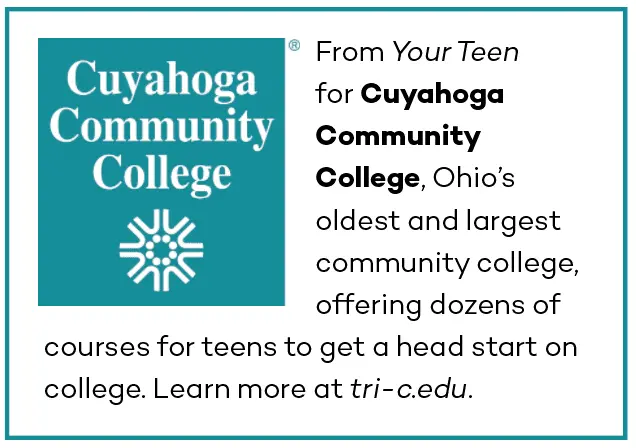If parenthood has taught me anything, it’s that the days are long, but the years are short. Which means that while my oldest is just in middle school, college (I’ve been told) is about two seconds away.

College Courses in High School
And with the skyrocketing price of tuition—along with the uber-competitive college admissions environment—like most parents, I worry. A lot. I think about what I could be doing now to ensure that my kids will enter the college of their choice. And leave without exorbitant debt. [adrotate banner=”35″]
Here’s an idea that hadn’t been on my radar until recently: having my high schooler take coursework at a community college. This cold save us a bundle on tuition. But it could also help my kid feel more ready for college when the time comes.
The practice is becoming increasingly popular, says Angela Johnson, vice president of access and completion at Cuyahoga Community College (Tri-C) in Ohio. In fact, high school students are the largest growing population at the majority of community colleges across the country, she says.
How It Works
There are several ways your high school student can enroll in community college courses, Johnson explains. The first is “dual enrollment,” where the coursework they take at their community college counts for both high school and college credit. The second is for students to enroll in courses independently of their high school, attending classes on evenings or weekends.
The third is that many community colleges offer coursework online, too. “Some students may be attending an online high school and use these courses to supplement,” Johnson says. Some colleges even bring the coursework (professor and all) directly to the high school through an outreach program.
The Financial Advantage
Tuition savings are a prime reason parents enroll their high schoolers in community college. The courses are generally less expensive than at four-year institutions. And in many cases high schoolers pay reduced-cost or no-cost tuition. For example, in Ohio, the Department of Education subsidizes the courses, Johnson says.
Laurie Septaric, whose daughters attended Tri-C while in high school, can attest to this. Septaric’s older daughter, Nicole, completed 45 hours of college coursework at Tri-C, saving over $20,000 on tuition. Her younger daughter, Kristen, completed high school with a whopping 83 college credits and now needs only 37 more credits to complete her B.A.
But the advantages weren’t only financial, says Septaric. Her girls were also able to deepen their learning and home in on their interests at the pace that was right for them.
Who Should Enroll?
A high school student who has “exhausted the AP and honors courses at their local high school” and is looking for further challenges tends to be a good fit for community college, says Kristen Moon, an independent college counselor and founder of college guidance program MoonPrep.com.

Parents may be enthused about the idea of saving money on tuition or accelerating their student’s course of study. But it’s not for everyone. “Students have to be extremely self-motivated, self-disciplined, and organized,” Septaric says.
Moon agrees that parents and students need to consider this option carefully. She also notes that “the experience of attending a community college could benefit the student by helping them mature.”
This was certainly the case for Septaric’s daughters. As she gets ready to drop Kristen off at college this fall, Septaric feels “very comfortable and confident” that her daughter is prepared. And with her advanced standing, Kristen is on track to complete her B.A. in two years. She will then head off to medical school to fulfill her dream of becoming a doctor.

I’m not sure yet what the future holds for my kids in terms of college (or how on earth we will pull it off!). I’m happy, however, to have one more promising idea to add to the list of options.




